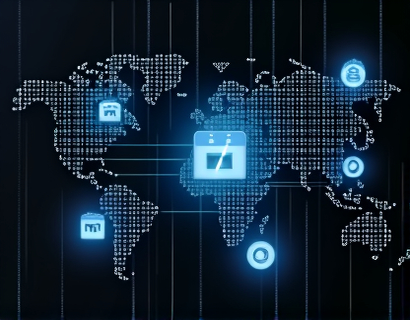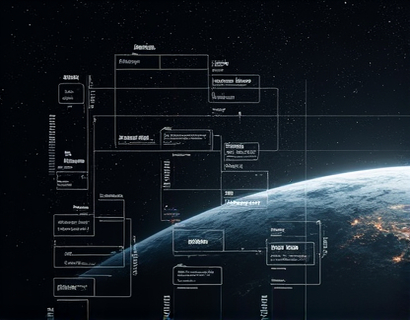Agricultural Software: Revolutionizing Farming Operations with Tailored Solutions
In the rapidly evolving landscape of agriculture, the integration of advanced technology has become pivotal for enhancing efficiency, productivity, and sustainability. Among the myriad of technological advancements, agricultural software stands out as a transformative force, offering tailored solutions that address the unique challenges faced by farming operations. This article delves into the ways in which innovative software is revolutionizing farming, providing insights into how these tools optimize processes, manage data, and support strategic decision-making.
The Need for Innovation in Agriculture
Traditional farming methods, while time-tested, often struggle to keep pace with the growing demands of a global population that is increasingly hungry. The need for higher yields, better resource management, and more sustainable practices has led to a technological renaissance in agriculture. Software solutions are at the forefront of this change, offering precision and flexibility that manual methods cannot match. These tools are designed to meet the specific needs of various agricultural sectors, from crop management to livestock monitoring, ensuring that farmers can operate more efficiently and effectively.
Advanced Data Management
One of the most significant contributions of agricultural software is its ability to streamline data management. Modern farming generates vast amounts of data, from soil moisture levels and weather patterns to crop health and machinery performance. Managing this data manually is not only time-consuming but also prone to errors. Agricultural software platforms provide robust databases and analytics tools that allow farmers to collect, store, and analyze data with ease. This data can be used to monitor crop growth, predict yields, and identify potential issues before they become critical, enabling proactive rather than reactive management.
Soil and Crop Monitoring
Soil and crop monitoring are critical components of successful farming. Advanced software solutions offer real-time monitoring capabilities through sensors and drones, providing detailed insights into soil conditions, nutrient levels, and plant health. For instance, soil moisture sensors can help farmers optimize irrigation schedules, ensuring that crops receive the right amount of water at the right times. Similarly, drone-based imaging can detect early signs of pest infestations or disease, allowing for targeted interventions that minimize crop loss and reduce the use of chemicals.
Precision Agriculture
Precision agriculture, also known as precision farming, is a methodology that uses technology to optimize field-level management with regard to site-specific variations in crops. Agricultural software plays a crucial role in implementing precision agriculture by providing tools for variable rate technology (VRT). VRT allows farmers to apply inputs such as seeds, fertilizers, and pesticides at varying rates across a field based on precise data. This not only improves resource efficiency but also enhances crop yields and reduces environmental impact. Software platforms can integrate data from multiple sources, including GPS, soil tests, and historical yield data, to create detailed maps and recommendations for optimal application rates.
Automated Equipment and IoT Integration
The integration of Internet of Things (IoT) devices with agricultural software has led to the development of smart farming equipment. Tractors, harvesters, and other machinery can be equipped with sensors and connected to a central system, enabling automated operations and remote monitoring. For example, automated irrigation systems can adjust water flow based on real-time soil moisture data, ensuring that crops receive the exact amount needed. This level of automation not only saves time and labor but also reduces the risk of human error, leading to more consistent and reliable farming practices.
Strategic Decision Support
Beyond day-to-day operations, agricultural software provides valuable tools for strategic decision-making. Farmers face numerous challenges, from market fluctuations to climate change, and making informed decisions is crucial for long-term success. Software solutions offer advanced analytics and forecasting models that help farmers predict market trends, optimize production schedules, and manage financial resources effectively. For instance, market analysis tools can provide insights into price trends and consumer demand, allowing farmers to adjust their production plans accordingly. Climate modeling tools can help in planning for future weather patterns, enabling better risk management and resource allocation.
Supply Chain Optimization
Efficient supply chain management is another area where agricultural software shines. From farm to table, the supply chain involves multiple stakeholders, and ensuring smooth coordination is essential. Software platforms can track the movement of goods, monitor inventory levels, and optimize logistics. This transparency and efficiency reduce delays and costs, ensuring that products reach the market in optimal condition. Additionally, blockchain technology integrated into these platforms can enhance traceability, providing consumers with assurance of the origin and quality of the products they purchase.
Sustainability and Environmental Impact
The environmental impact of farming practices is a growing concern, and agricultural software is playing a key role in promoting sustainable agriculture. By optimizing resource use and reducing waste, these tools help farmers minimize their ecological footprint. For example, precision application of fertilizers and pesticides not only improves crop yields but also reduces the runoff that can harm local ecosystems. Moreover, software can assist in planning crop rotations and cover cropping, practices that enhance soil health and biodiversity. As the world moves towards more sustainable farming methods, software solutions that support these goals will become increasingly important.
User-Friendly Interfaces and Accessibility
For agricultural software to be truly effective, it must be user-friendly and accessible to farmers of all technical backgrounds. Many software solutions are designed with intuitive interfaces that require minimal training, making them accessible to a wide range of users. Mobile applications allow farmers to access data and tools on-the-go, ensuring that they can make informed decisions in real-time. This accessibility is crucial for smallholder farmers who may not have extensive technical expertise but can greatly benefit from the insights provided by advanced software.
Case Studies and Success Stories
To better understand the impact of agricultural software, let's look at a few success stories. In one instance, a medium-sized farm in the Midwest implemented a precision agriculture system that included soil sensors, drones, and a central data management platform. Within a year, the farm saw a 15% increase in crop yields and a 20% reduction in input costs. The data-driven approach allowed the farmer to identify and address issues promptly, leading to more consistent and higher-quality harvests. Another example is a cooperative of smallholder farmers in Africa who used mobile apps to access market information and weather forecasts. This access enabled them to make better planting and harvesting decisions, resulting in a 25% increase in income.
Challenges and Future Directions
While the benefits of agricultural software are clear, there are still challenges to overcome. One major hurdle is the initial cost of implementation, which can be prohibitive for some farmers, especially smallholders. However, as the technology matures and becomes more widespread, costs are expected to decrease. Additionally, there is a need for better training and support to ensure that farmers can fully leverage the capabilities of these tools. Future developments may include more integration with artificial intelligence and machine learning, further enhancing the predictive and decision-support capabilities of agricultural software.
Conclusion
The integration of agricultural software into farming operations is not just a trend but a necessity for the future of agriculture. These tailored solutions offer a comprehensive approach to optimizing efficiency, managing data, and supporting strategic decisions. By embracing these technologies, farmers can enhance productivity, reduce costs, and contribute to a more sustainable and resilient food system. As the agricultural sector continues to evolve, the role of software will only become more significant, paving the way for a new era of smart and sustainable farming.










































